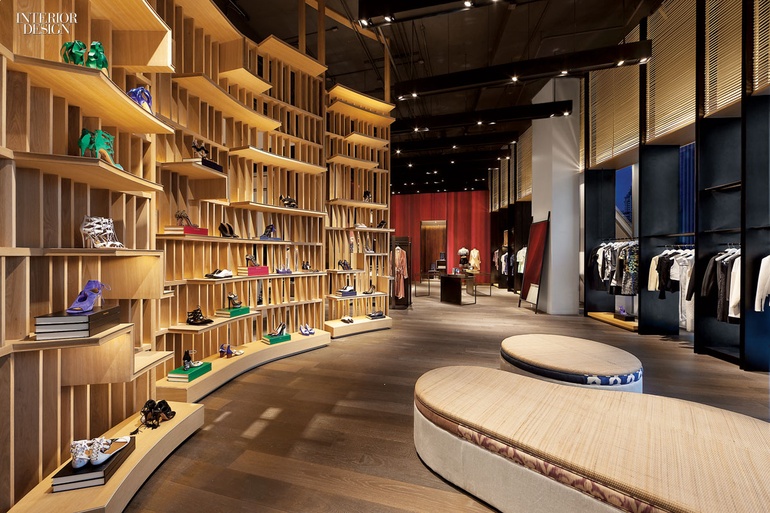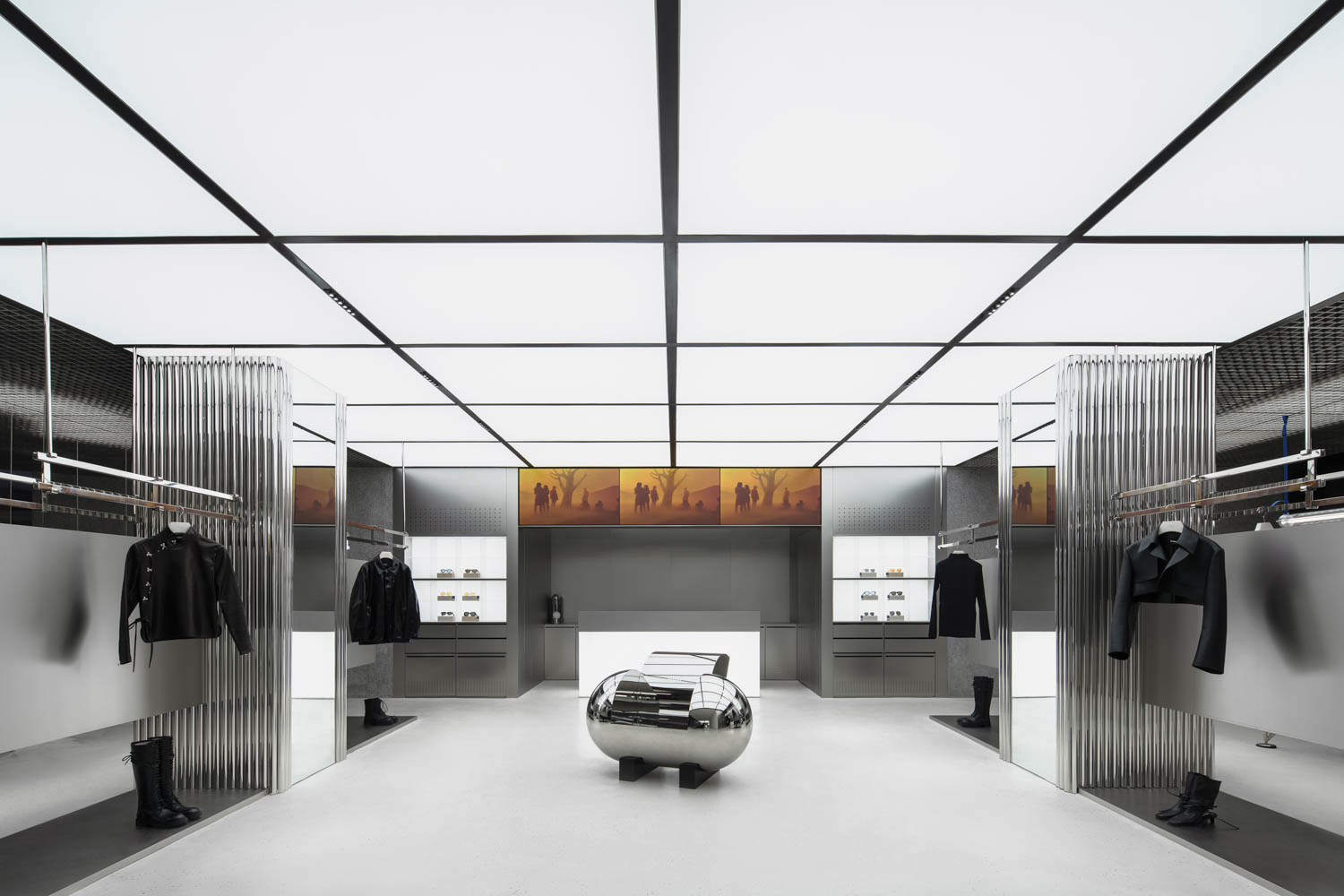Standing Out From the Crowd: Yabu Pushelberg’s Thai Approach at Siwilai
For select global citizens, luxury shopping has become a contact sport. They flit from one capital to the next, finding their footing with familiar brands, which display essentially the same merchandise worldwide—think Stella McCartney or Louis Vuitton. Globetrotting Interior Design Hall of Fame members George Yabu and Glenn Pushelberg know a thing or two about luxury, too, though they prefer to shop outside the bubble. For them, the thrill of a new destination is its bounty of local discoveries to write home about.
Of late, the pair have been shuttling back and forth from Toronto and New York to Bangkok, where they’re completing interiors for the luxe Park Hyatt. It won’t debut until next year, leaving plenty of time to explore the city’s adventurous design scene and cuisine, which they’re already extolling. Meanwhile, in the podium at the base of the hotel, the Central Embassy shopping mall has opened. Its Yabu Pushelberg–designed concept store, Siwilai, reflects their impressions, perhaps offering a taste of what’s to come upstairs.

An adaptation of the English word civilized, Siwilai is all about world-class shopping with a local flavor. Design-wise, the store is certainly a far cry from big-name fellow tenants. “It’s a counterpoint to what everybody else is doing,” Pushelberg says. He calls the aesthetic “a little bit raw.”
Related:
7 Simply Amazing Retail Destinations in Asia
Yabu Pushelberg’s Design for Canada Olympic House in Rio Teems with Country Pride
The storefront owes its distinctive concave shape to the lease line of the mall corridor. But everything else about the entry is a departure from the surroundings. The detailing of the three sets of tall doors, monumental slabs of local teak, conveys a welcome sense of place. They were milled without benefit of computerized tools, now ubiquitous in Asia, then carved with a distinctive hatched pattern that has become an essential part of the store’s branding. “You can feel that the timber was handcrafted, and they didn’t finish it with spray lacquer,” Pushelberg notes. “You can always tell the difference when things are done by hand.”

Inside the 8,900-square-foot space is a carefully curated roster of international niche labels of women’s and men’s clothing and accessories. As with any concept store worthy of the name, there’s also a constantly changing collection of crafts, gadgets, vinyl records, and style books. Any of the above can be showcased in the very first area that shoppers encounter. Conceived as a sort of town square, with the various departments arrayed around it market-style, this central zone is defined by parallel runs of full-height shojilike screens—the typical paper replaced by artist’s canvas primed with a gesso finish. “So there’s a softness to them,” Pushelberg says. The screens at the ends can pivot inward 90 degrees, transforming a corridor into a box. That means it’s possible to accommodate a runway show one week, a pop-up shop the next.
Related:
The Pump Room Gang: Yabu Pushelberg Renovates the Public Chicago’s Iconic Restaurant
Simply Amazing: 30 Global Retail Spaces
If the panels are in the open position, it’s easy to proceed straight ahead to the shoe department, set apart by curved mahogany dividers that incorporate shelving. Bucking longstanding retail convention, the whole display is fixed in place. “Flexibility is overrated,” Pushelberg proclaims. Yabu adds, “We sometimes go through all the trouble of making something flexible, and the store never actually changes it.” Need to try on a stiletto sandal? A large ottoman is shaped to recall the outline of a footprint in the sand—a smaller, round ottoman represents the big toe, visual pun intended. The seat cushions are covered in rattan fabric edged with robust cording wrapped in Thai silk.

Not that Yabu and Pushelberg completely eschewed the sort of crisp contemporary detailing prevalent in international luxury retail. They painted the ceiling matte gray to act as a contrast to the dazzlingly white canopies suspended over most departments. An entirely different paint effect, in striated red, is found in one corner. “As you walk through the store, you encounter these surprises,” Pushelberg says. He and Yabu asked a decorative painting studio back home in Toronto to work up a sample of the loosely rendered vertical stripes for the Thai artisans to emulate.
The Thai vernacular unabashedly returns in the café. Tables were designed to resemble picnic furniture. Overhead, the canopy was inspired by the roofs of Bangkok’s vaunted shop-houses, the small family-run eateries with their owners living upstairs. Siwilai’s version is a gable of corrugated steel painted with a riotous patchwork of bright colors. Meanwhile, Yabu notes, the tile mosaics on the end walls combine “interesting, typically institu-tional colors like pea green and mustard.” Take that, Stella and Louis.


